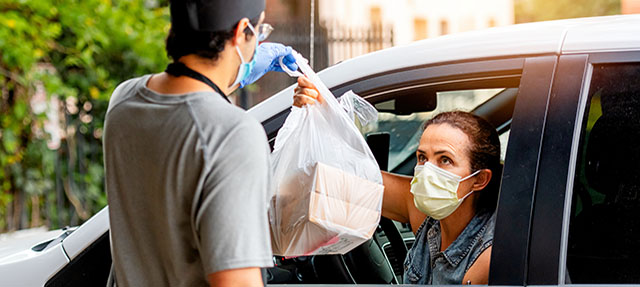Before the pandemic, more than 2.2 million Californians, accounting for 11.7% of total state employment, were self-employed. How are these workers doing in the current economic downturn? According to the Census Bureau’s weekly survey, self-employment in California fell by nearly a million between late April and mid May and then rebounded by about half in the last week of May.
In this post, we look at Californians who rely on independent contracting, freelancing, or gig-economy work as their main source of income. These 1.6 million workers account for about two-thirds of all self-employment; the remainder are business owners. (We don’t know how many Californians do gig work to supplement their earnings from wage or salary jobs, but nationwide estimates suggest a number similar to the number of self-employed Californians.)
The current circumstances of self-employed Californians differ greatly across sectors. Over one-quarter of workers in the “other services” sector are independent contractors, freelancers, and gig workers, one of the three hardest hit sectors over the past two months. This sector includes 93,000 working in beauty and nail salons and barber shops and 95,000 in private households (cooks, maids, and landscapers). Many of these businesses will be among the last to reopen due to the difficulty of maintaining social distancing.
Many self-employed Californians work in professional services and construction; these sectors—which were severely affected during the Great Recession—have taken a slightly smaller hit over past two months (6.2% and 16.8% declines, respectively).
How independent contractors, freelancers, and gig workers fare during the downturn depends on their ability to work remotely, their income, their accumulated wealth, and state and federal policy responses. While earnings in the most common occupations for self-employed workers vary, they tend to be well below the statewide average.
Freelancers, independent contractors, and gig workers are more likely to be male, white, and 55 or older than California’s wage-and-salary workers. About a third hold a bachelor’s degree or more—a slightly lower share than the rest of the labor force. These self-employed workers are also much less likely to have finished high school than the rest of the labor force (82% vs 88%, respectively). By contrast, self-employed small business owners tend to have higher levels of education, are even more likely to be white, and are more likely to be male than both non-owner self-employed workers and wage-and-salary workers.
At least 963,531 workers in California applied for Pandemic Unemployment Assistance (PUA) benefits between March 14 and June 6.PUA assists self-employed gig workers, independent contractors, business owners, and other workers not covered by traditional unemployment insurance. Gig workers and independent contractors eligible for PUA may receive $167/week until December 2020, plus an additional $600/week through the end of July. Some self-employed workers may become eligible for traditional unemployment benefits if they are reclassified as employees in accordance with California Assembly Bill 5 (AB 5). In November, California voters will decide whether to exempt rideshare and delivery drivers from AB 5.
Just like other workers anxious to go back to work, independent contractors and gig workers will have to navigate a potentially slow reopening of businesses. Continuing to address the gaps in unemployment assistance through state and federal policy is critical to support these workers, who comprise an important part of California’s labor force.






